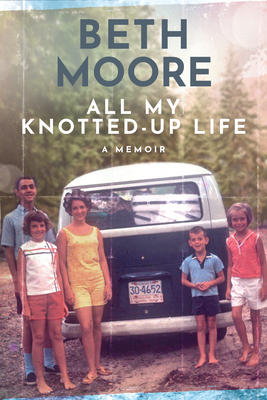
Main Characters
The central character in “All My Knotted-Up Life” is Danya, a young woman navigating the tumultuous waters of her identity, family expectations, and personal aspirations. Danya is portrayed as introspective and sensitive, grappling with the complexities of being a first-generation daughter in an immigrant family. Her motivations stem from a desire to carve out her identity while balancing familial responsibilities and societal pressures. Throughout the story, Danya undergoes significant character development; she evolves from a state of confusion and self-doubt to embracing her authentic self, which resonates loudly with readers who may also grapple with identity issues in their own lives.
The antagonist of the narrative can be seen as Danya’s mother, who embodies the traditional values and expectations that often clash with Danya’s quest for independence. The mother’s motivations are rooted in her experiences as an immigrant, emphasizing the importance of family and cultural heritage. This creates a tension-filled relationship, as Danya struggles to honor her mother’s sacrifices while pursuing her own dreams. The dynamic between Danya and her mother serves as a poignant exploration of generational conflict, love, and the weight of unspoken expectations.
Other key characters include Danya’s friends and romantic partner, who play essential roles in her journey. Figures like Maya, her best friend, provide support and encouragement, showcasing the importance of friendship in navigating life’s challenges. Meanwhile, her romantic interest offers Danya a glimpse into a life filled with possibilities, representing her yearning for love and acceptance. Each character contributes to Danya’s growth, reflecting the diverse influences that shape her identity and choices throughout the narrative.
Plot
The main conflict of “All My Knotted-Up Life” revolves around Danya’s internal struggle and her quest for self-acceptance in a world that often feels restrictive. As the story unfolds, Danya confronts the expectations imposed upon her by her family, particularly her mother, while also navigating the complexities of friendships and romantic relationships. The narrative is packed with moments of tension, as Danya vacillates between adhering to her cultural heritage and embracing her individuality.
The plot develops through a series of pivotal events that challenge Danya’s perceptions of herself and her relationships. Key moments involve confrontations with her mother about life choices, experiences that push her out of her comfort zone, and moments of self-reflection that spur her growth. As Danya faces the reality of pursuing her dreams versus fulfilling her family’s expectations, the story culminates in a significant resolution where she learns to embrace her identity without alienating those she loves. This resolution is not simply about choosing one path over the other but about synthesizing the threads of her past with her aspirations for the future, resulting in a profound personal transformation.
Setting
The setting of “All My Knotted-Up Life” is primarily located in an urban environment that mirrors the tensions of cultural duality prominent in Danya’s life. The backdrop serves to highlight the challenges faced by immigrants and their children, illustrating how the external environment reflects internal conflicts.
The time period is contemporary, allowing the narrative to engage with modern themes of identity, diversity, and personal empowerment. The urban landscape, with its juxtaposition of cultures and lifestyles, plays a pivotal role in shaping Danya’s experiences. It influences her social interactions, her sense of isolation, and her eventual connection to her authentic self. The setting serves not only as the physical space Danya inhabits but as a character in itself, contributing to the depth of the narrative.
Themes
Several underlying ideas and messages are explored within the pages of “All My Knotted-Up Life.” One of the most prominent themes is identity and self-discovery. Danya’s journey embodies the struggle many face in reconciling different parts of their identity, particularly as a child of immigrants. The complexities of navigating cultural expectations while seeking personal fulfillment resonate deeply with readers, inviting them to reflect on their own journeys.
Another significant theme is the intricacy of family relationships. The bond between Danya and her mother serves as a focal point for exploring love, sacrifice, and the generational gap in understanding, although, The novel adeptly depicts the nuances of familial love, where conflict often arises from a place of deep care and concern. Additionally, the theme of friendship underscores Danya’s growth, emphasizing the importance of supportive relationships in fostering self-acceptance and emotional resilience.
Motifs throughout the narrative, such as knots, symbolize the entanglements of life—representing both challenges and the potential for clarity. As Danya works to unravel these knots, the motif underscores her growth and journey towards self-acceptance, making it a significant element of the narrative structure.
Author’s Narrative Style
The author’s narrative style in “All My Knotted-Up Life” is characterized by lyrical and evocative prose that captivates readers. The language is rich and descriptive, drawing readers into Danya’s emotional landscape and creating a vivid sense of her experiences. The author deftly balances introspection with action, allowing for a dynamic exploration of Danya’s internal conflicts and external events.
The tone of the book oscillates between reflective, poignant, and at times, humorous. This tonal range engages readers on multiple levels, providing a space for both serious contemplation of identity issues and moments of levity that underscore the importance of friendship and love. The author’s skillful handling of tone enhances the narrative’s emotional depth, making Danya’s story not only relatable but also resonant.
Author’s Point of View
The novel is articulated through a first-person perspective, allowing readers to intimately experience Danya’s thoughts, emotions, and observations. This choice of perspective is instrumental in fostering empathy and connection, as readers are granted access to Danya’s internal struggles and aspirations.
By narrating the story from Danya’s point of view, the author highlights the subjective nature of identity and the complexity of relationships. It allows for a detailed exploration of her psyche and the various influences that shape her decisions. The first-person narration enhances the emotional resonance of the narrative, inviting readers to accompany Danya on her journey of self-discovery.
Personal Reflection
“All My Knotted-Up Life” is a compelling exploration of identity, relationships, and the quest for authenticity that resonates with contemporary themes of self-acceptance and personal growth. The narrative’s reflection on the struggles of first-generation individuals navigating cultural expectations is particularly timely in today’s diverse society. Many readers will find themselves connecting with Danya’s journey, as it mirrors the personal battles faced by those attempting to balance their heritage with modern aspirations.
While cultural conversations around identity, mental health, and authenticity are increasingly relevant, this novel’s exploration of these themes serves as an important contribution to the discourse. Danya’s experiences encourage readers to embrace their complexities and seek a sense of belonging that honors their past while celebrating their unique identity.
The significance of this book extends beyond storytelling; it serves as a reminder of the importance of supporting one another in our journeys of self-discovery, thereby fostering a culture of empathy and understanding in a changing world.
Conclusion
In conclusion, “All My Knotted-Up Life” is an intricately woven narrative that delves deep into the themes of identity, family, and love. Through Danya’s journey of self-acceptance, the novel offers readers essential insights into the complexities of navigating cultural heritage in modern society. With its rich characterization, thoughtful plot, and evocative writing style, the book stands as both a literary achievement and a relevant exploration of contemporary issues. Danya’s story ultimately champions the idea that embracing one’s authentic self is a courageous and vital journey, making it a powerful read for anyone questioning their own path in life.
Also check out…
- The Fruitful Life: A Comprehensive Summary
- 5 Books to Aid Your Spiritual Growth: A Journey of Faith and Transformation
- Summary of “Shades of Mercy”


